Rethinking Snowmobile Ownership
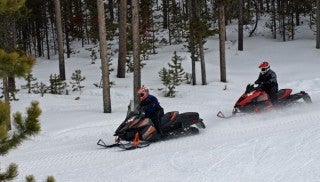
How to better prepare and educate the sled market to entice casual snowmobilers
When a friend recently told us about his experience snowmobiling in Yellowstone National Park this past winter, it caught our attention on several levels. Although he was familiar with the sport, he was not up-to-date with the many changes that had been made in the sleds over the decades. And he found renting a viable option to get his snowmobile fix while on vacation.
He commented positively on his experience, noting that the hand and thumb warmers on his rental sled actually worked and that his sled had good acceleration and rode comfortably. Those are things that we as snowmobile test riders and evaluators take as the norm and rarely think anything about it. Unless, of course, they don’t work, which in today’s world of electronic technology is unlikely. Then there was the sled itself, a well-used rental of a current brand and make that we mentally push aside as we focus on the most powerful and newest models.
Taking into consideration that decades ago this person worked for a major Eastern snowmobile distributorship, we accept that his knowledge of the sport’s key models probably stopped with then-new Ski-Doo TNT 440s, John Deere Cyclones, Polaris TX340s, Scorpion Whips and Yamaha Exciter 440s. It wasn’t all that surprising that he found a current year rental much improved over what he’d left behind.
The rental sleds available to ride into Yellowstone National Park have to be low emission sleds such as Ski-Doo’s ACE-engined MXZ and Grand Touring models. While not the first models to come to mind for a performance tour, we can understand how a person who hasn’t ridden or experienced today’s sled technologies would be impressed. That got us to thinking and asking how many other winter enthusiasts might there be who are equally under-educated on modern snowmobiling? And how do we educate them?
When our friend stopped snowmobiling, his era of sleds rode stiff and didn’t handle well at all. For people who stepped away from the sport prior to the Ski-Doo-inspired ride forward “REV-olution,” they remember uncomfortable suspensions, bouncing front skis and smelly, noisy engines. Things have changed a great deal since then.
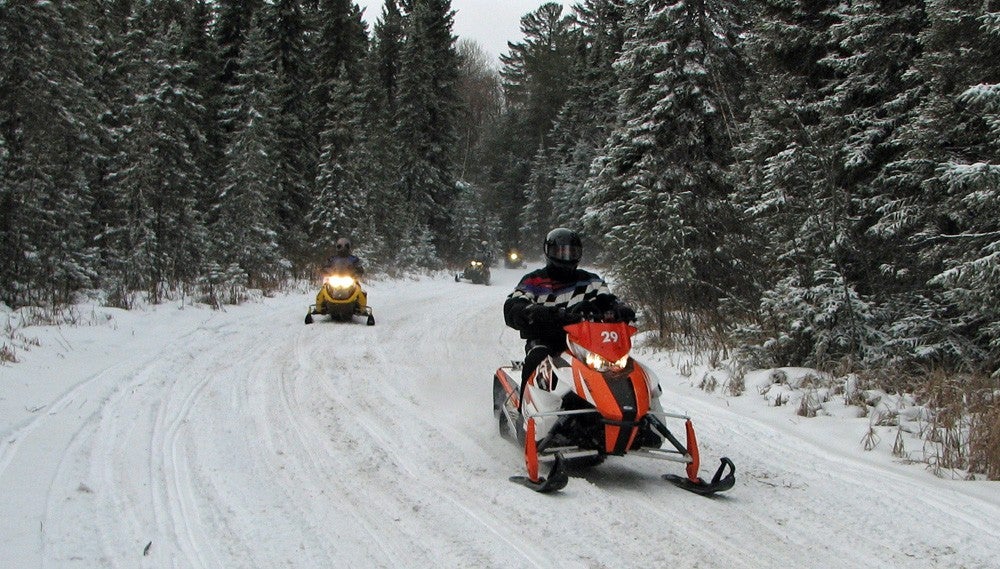
Casual riders rent sleds to enjoy the scenery and join with friends; speed and acceleration are secondary to comfort, reliability and camaraderie.
While Yellowstone National Park’s 45 mph speed limit might be too restrictive for us, managing to comfortably and easily accelerate to the speed limit on his rental impressed our friend. Today’s four-strokes, like the ACE 600, make great rental sleds because they are fuel efficient and durable for the rental operator. But they provide adequate performance for the casual sled renter without any two-stroke after-smell to cling to their snowsuit and without much noise, most of which comes from the track and not the engine bay. Much has changed since our friend’s day.
That was what caught our attention. Maybe we don’t step back often enough to realize just how far the sport has come. It takes a snowmobile-returnee to help us see the advances the sport has made. He was looking at his rental sled as being a vast improvement over what he had known from the 1970s and 1980s. We look at his rental sled as being a low-caste almost stigmatized model vastly inferior to a 2017 Ski-Doo MXZ 850 or Yamaha Sidewinder turbo. In reality we’re both right in our impressions, but our friend’s experience leads us to an epiphany of our own.
Modern snowmobiling seems predicated on performance. Not that there’s anything wrong with that, eh? After all, performance sells in a sledding landscape that generates less than 200,000 unit sales a year – worldwide! To generate the best profits, selling your highest margin products to the biggest buying group makes dollars and sense. Performance riders buy higher priced sleds much more often than casual or club riders. There will be more profit for the sled manufacturer and its dealers retailing US$16,699 2017 Yamaha Sidewinder L-TX LE turbocharged models than fan-cooled 2017 Polaris 500 Indys at US$6,799. But in doing so are shortchanging the sport and the long term future by not educating fallen away snowmobilers as to how the sport has become more of a family, fun sport?
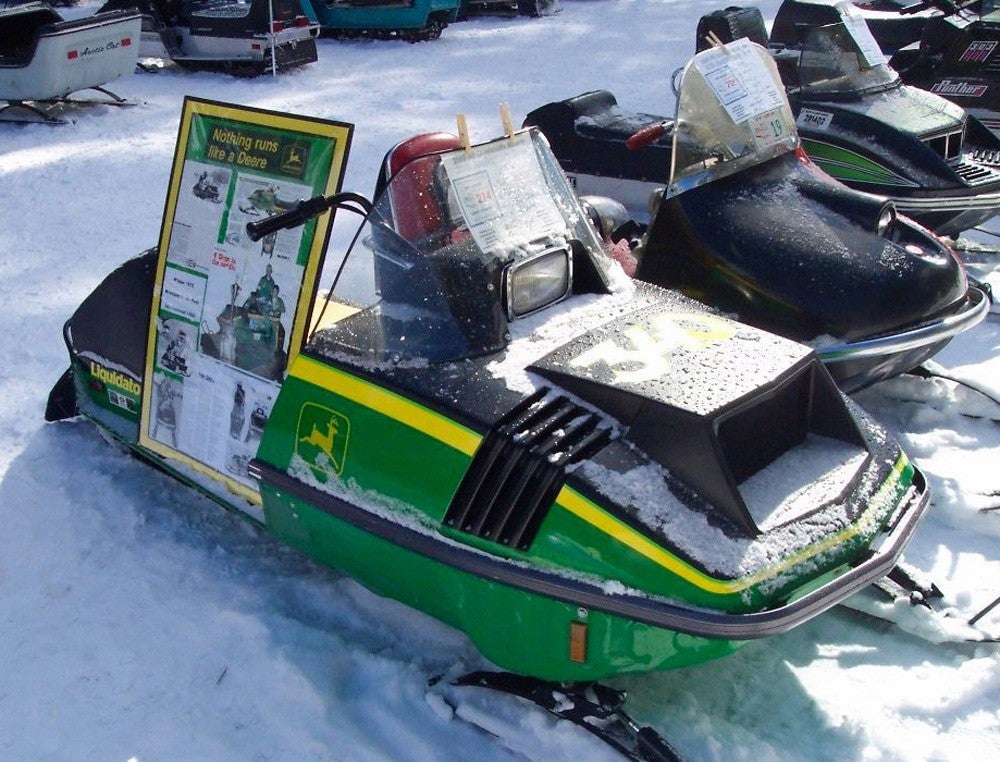
For a “fallen-away” snowmobiler, their last snowmobile experience may have come on a family outing on one of these two-stroke smoke belching classics.
The Social Security aged Baby Boomer generation has passed its prime as the key sled buying consumer. Indeed, if a report about trends in the US$50 billion recreation vehicle industry can be believed, there is an immediate impact being made in RV sales by Millennials, those under 35 years of age. These buyers want RVs with room for their toys – bicycles, surf boards, kayaks – and special accommodations for their kids and pets. Keep in mind that the RV industry expects this influx of sales to Millennials could expand the RV market by nearly six percent in US sales this year. The RV industry expects to ship nearly 400,000 units this year; compare that to the number of sleds sold last year.
Many in this group of buyers had a history of RVing with their parents and are getting back into it, on their terms. We suspect many in this grouping once snowmobiled with their family. Are we inviting them in? Are we finding ways to educate them to help them realize that the sleds of their parents aren’t like the ones they could ride now?
Like my friend, once he rented that sled in Yellowstone, he experienced a new level of riding that was unknown to him before. His experience was positive and he will tell his friends, but because he lives in a major East Coast city, he likely won’t be buying a snowmobile any time soon. But he might rent one again!
Here’s a thought: rather than push buying a new sled, what about pushing the new sled experience. Way back in the days when the 30 to 40 existing snowmobile companies of the 1960s and 1970s were predicted to produce a million sleds per year, industry leaders studied ways to get sleds to urban buyers. One proposal was to create “snowmobile marinas,” the winter equivalent of lakeside boat dealerships who would sell, store and maintain a city-dweller’s sleds in a popular resort area. For snowmobilers in urban New York City, the plan was for areas like Old Forge and the Adirondacks to become snowmobile areas. And they did.
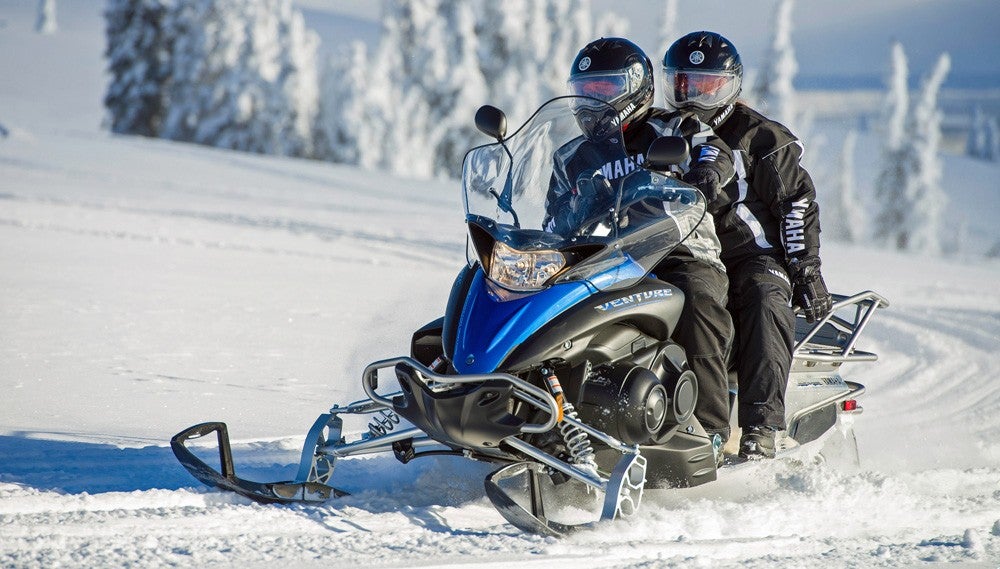
While serious riders interpret high performance with horsepower and top speed, many rental riders may view a tall wind-deflecting windshield, comfy two-up seating and warm hand grips as their definition of high performance.
You can rent a liquid-cooled modern sled for a three-day weekend in those areas for about US$700. In Michigan’s Upper Peninsula, a favorite spot for Midwestern riders, you can arrange a three-day rental of a two-up sled for US$525. A weekend special rate of US$399 at one resort in central Minnesota gets you either an one-up or two-up sled. In Yellowstone rentals are seemingly everywhere. A guided tour into the park will start at about US$200 for the sled, with ala carte pricing for suits, helmets, insurance, etc.
Perhaps snowmobiling could learn from the boating industry. There is a growing popularity of boat ownership clubs, where you pay an annual membership fee to use a boat in the club’s fleet a specified number of times. Generally, these operations offer varying levers of membership. You get to use the boat on qualified dates and at the end of your membership you walk away with no fees for annual storage, maintenance, insurance, etc.
The concept is slow to take hold for powersports, but it may be coming as a Minnesota company called Fractional Toys offers year round access to a variety of recreational toys, including snowmobiles, ATVs and RVs. The business model mimics the boat clubs.
Some snowmobile dealers in resort areas like Eagle River, Wisconsin, Tug Hill, New York, South Dakota’s Black Hills and Wyoming’s Yellowstone area cater to select customers by storing and maintaining their sleds for on-call usage. This was all part of the original 1970s plan to expand the snowmobile market.
In popular snowmobiling areas, renting a sled for up to four weekends per season could make better sense than buying. At about US$500 per weekend, a casual season of riding would be about US$2000. Granted that probably won’t get you the high performance ride that we’d want, but you could get three years’ worth or riding versus buying a US$6000 value sled. That could be a great fit for a casual rider. If they like snowmobiling and want to do more if it, then they could buy a new sled of their choice.
If those RV industry suppositions about enhanced growth are valid, the snowmobile industry may need to re-think its current business model and move to a more inclusive one that figures out how to invite more casual Millennial snowmobilers into the fold.



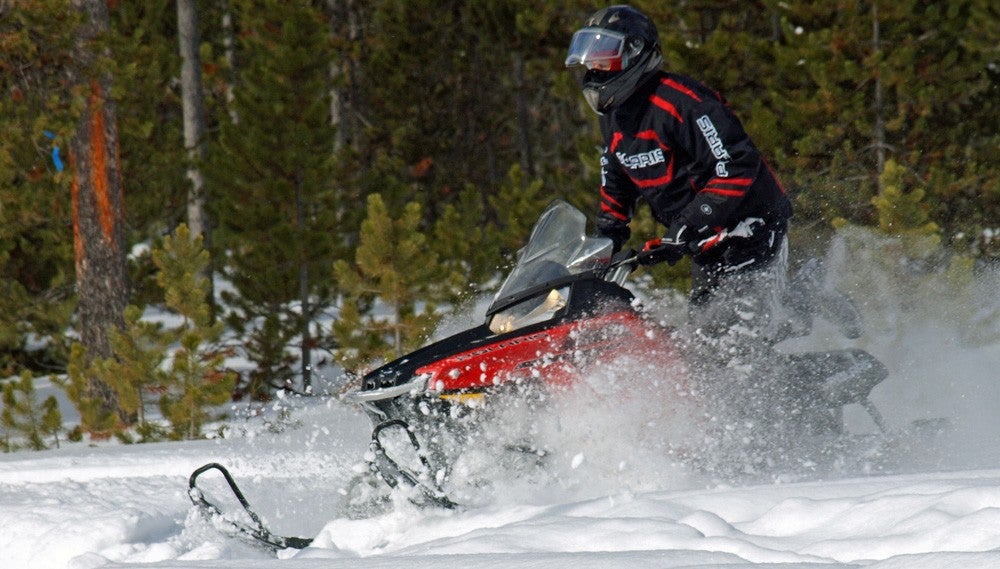


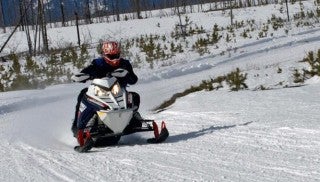


 Your Privacy Choices
Your Privacy Choices